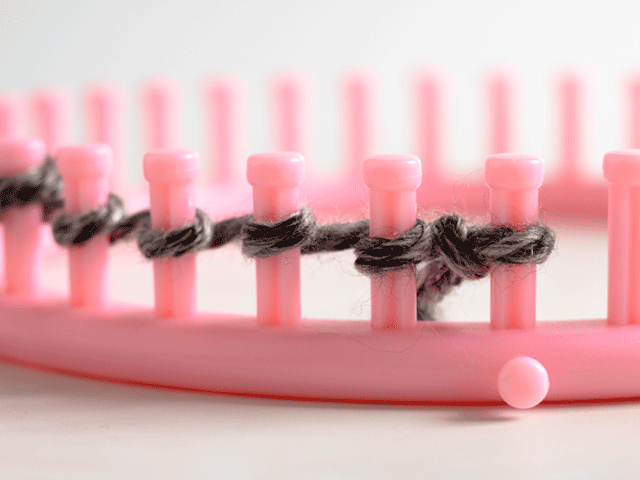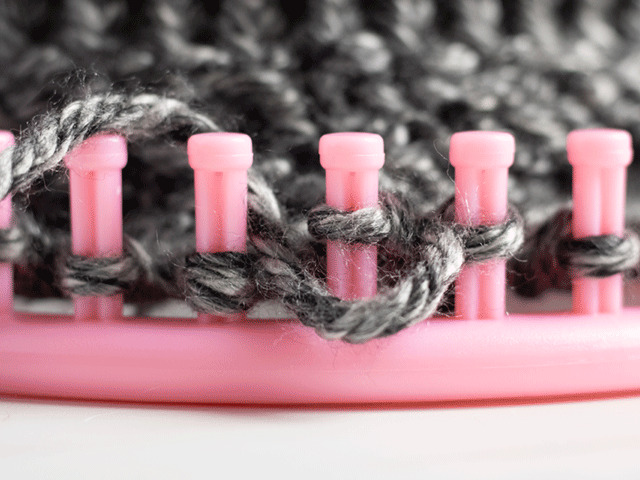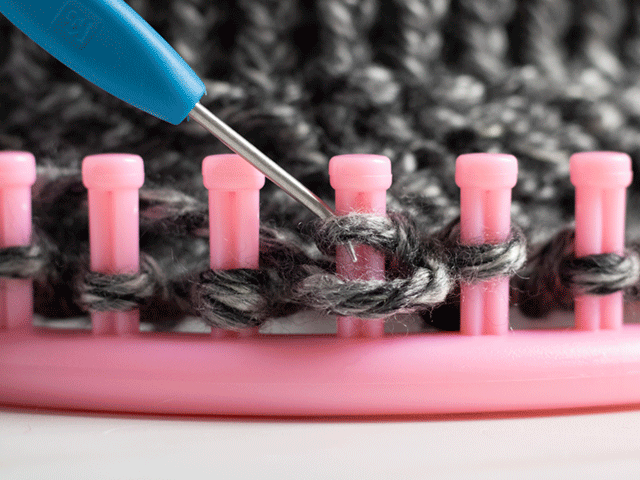The purl stitch (not the pearl stitch alas!) is one of the flagships in the loom knitting world. Although it’s not as easy as the e-wrap, the purl only takes a minute to learn. And once you’ve mastered the purl, you can use it to craft a variety of fun projects from beanies to blankets to scarves.
So let’s get purling!
Step 1
Since you need an initial loop on your peg to get purling, we’re going to cast on with a slip knot on your starting peg. From here, I’m going to do an e-wrap around each peg on the loom so I have a base to work with. You can go to the right or to the left, but I prefer the left so that’s what you’ll see in the photo.
Step 2
Next, take your working yarn and place it in front and beneath the loop currently on your peg. It’s important that you don’t go above your loop because you’ll end up doing a completely different stitch.
Step 3
Grab your loom knitting hook and slide it into the top loop. Pull it a little ways out from the peg, just enough to give yourself some room to work with.
Step 4
This last step is a bit tricky. You want to use your loom hook to grab the working yarn, and pull it up through the bottom of your loop. This creates a new loop. Pull that new loop up so the original loop falls off the peg.
Then place your new loop on the peg – and you’re done!
Do I Have to Purl an Entire Row Every Time?
Nope! And you don’t have to e-wrap your first loop every time either. So long as you have one loop on the peg, you’re golden. I purled quite a few rows just for the visual, but you can purl a single peg if that’s what your pattern requires. Just put that yarn beneath and in front, go up through your old loop, then place your new loop where the old one was.
When Do I Use the Purl Stitch?
The purl stitch creates bumps and ridges in fabric, so it’s primarily used to add texture to other stitches. For example, you alternate knit stitches and purls to create ribbed stitches. Similarly, you need to alternate rows of knit and purls to create garter stitches.
When used on its own, purl fabric works well for gloves and mittens. If you want to try a pattern that introduces and incorporates the purl stitch, I suggest starting with a Swirl Beanie.




